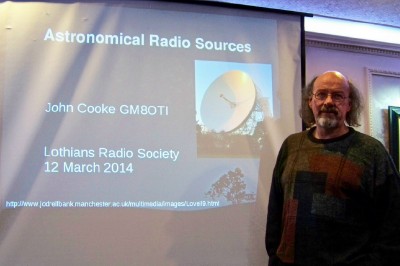
LRS Past-President John Cooke GM8OTI was an astronomer by profession, although not specifically a radio astronomer. He was stimulated to take an interest in radio astronomy after seeing the 250ft Lovell Radio Telescope at Jodrell Bank at an early age. John gave a very comprehensive talk with many illustrations of Astronomical Radio Sources. His talk covered: (1) Detection of astronomical radio sources; (2) How radio energy is produced by those sources; (3) Descriptions of the sources.
Credits for the sources of the photographs are included in the slides where appropriate.
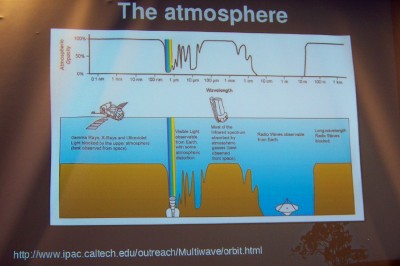
(1) Detection of astronomical radio sources;
Apart from visible light, centimetric radio waves are the most detectable on earth as they are the least absorbed by the atmosphere.
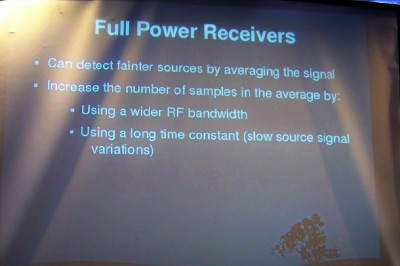
The choice of receivers (always outputting to a computer) is among: Full-Power Receiver, Spectroscopy, Interferometry and Aperture Synthesis.
A “Full-Power” receiver is a superhet which takes the broadband input and uses front-end bandwidth limitation to give a limited range of frequencies.
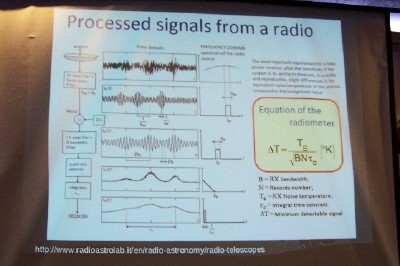
A radiometer measures radio flux over a range of frequencies.
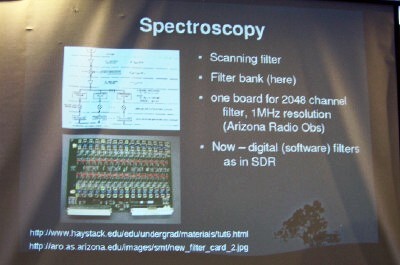
Spectroscopy is used to examine individual signals. The use of a scanning filter is inefficient. A filter bank of e.g. 2048 channels x 1MHz is much better and can be achieved today using digital software filters in a software-defined radio (SDR).
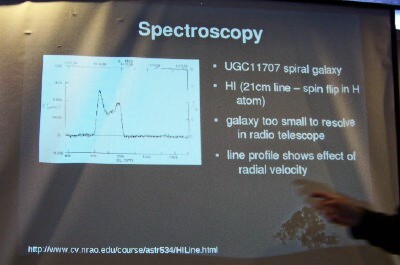
John showed a photo of spiral galaxy UGC11702 received at 21cm demonstrating a double signal peak from the rotating Doppler-shifted signals.
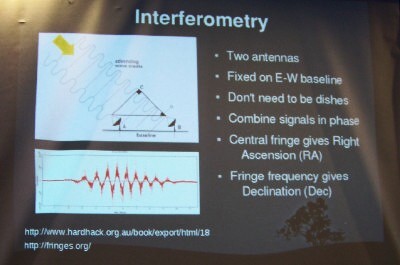
Interferometry uses two antennas fixed on an E-W baseline with the two signals combined in-phase with equal feeders. The Central frequency gives the Right Ascension (RA) and the Fringe frequency gives the Declination (Dec), providing more accurate location of the source than from a simple dish antenna. Wider spacing of the two antennas gives an improvement in positional accuracy.
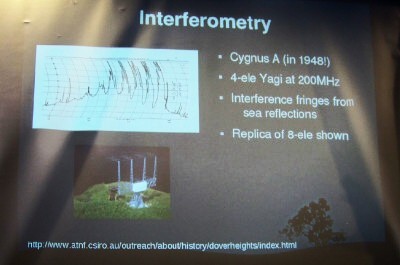
John showed an image of Cygnus A taken using a single antenna on a cliff-top and employing interferometry using the reflection from below as well as the direct signal.
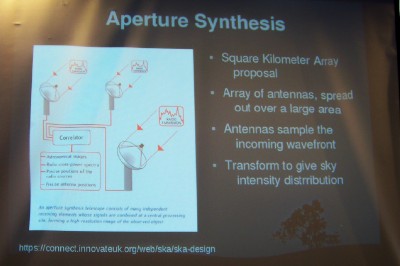
Aperture Synthesis is employed by the Cambridge Ryle Telescope: a 5km telescope on a railway truck; the Very Large Array (VLA) in New Mexico employs three 25km arms in a huge system.
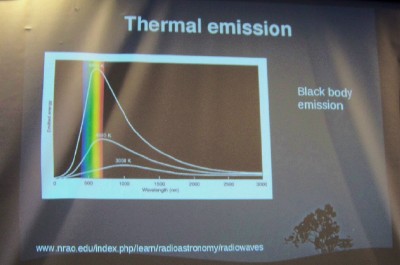
(2) Production of Radio Energy by Astronomical Sources
Thermal emissions can be black body, free-free and spectral line. Black body emissions (as from a heated metal bar) are strongest in the visible spectrum, the realm of optical astronomy.
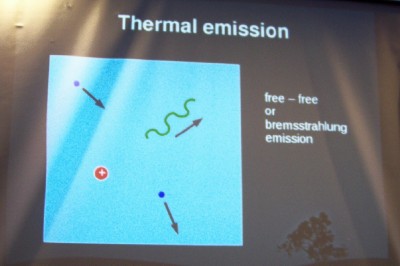
Free-free emissions or “bremsstrahlung” are produced when an electron strikes an atom, producing an RF signal.
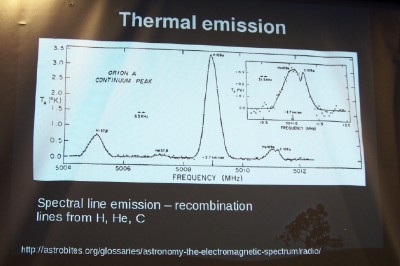
Spectral line emissions are produced when electrons jump from one quantum energy level to another, an example being at about 5GHz.
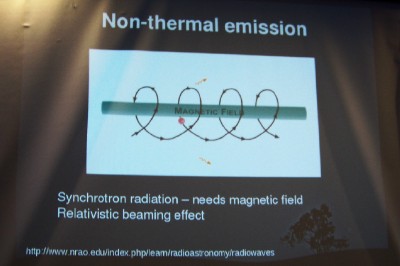
Non-thermal emissions include synchrotrons and masers.
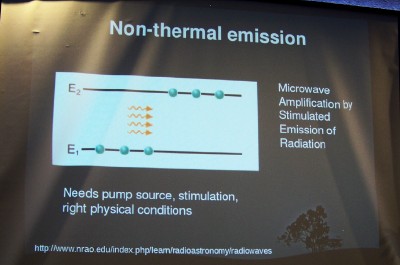
MASER – Microwave Amplification by Stimulated Emission of Radiation,
the same general principle as that of the LASER (Light).
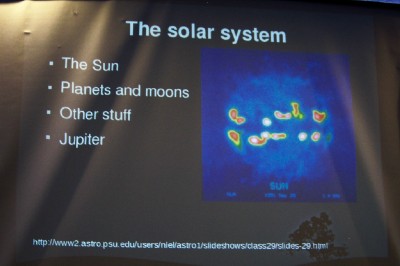
(3) Astronomical Radio Sources
The Solar System – John described the radio emissions from the Sun, Planets & Moons, “other stuff” & Jupiter. Sunspots on the sun are regions which are cooler than their surrounds as convection currents raise material from the interior.
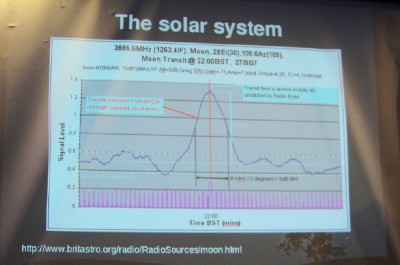
The moon provides thermal emissions at 3886.6MHz.
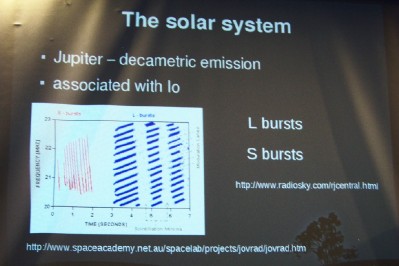
Of the planets, the giant Jupiter provides decametric emissions associated with its moon Io. These include L (long) and S (short) bursts.
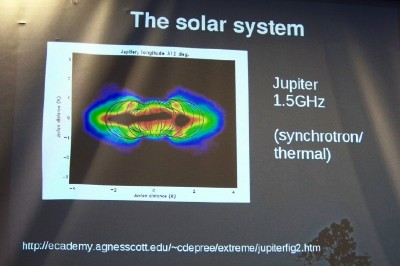
Jupiter’s emissions include synchrotron / thermal signals at 1.5GHz.
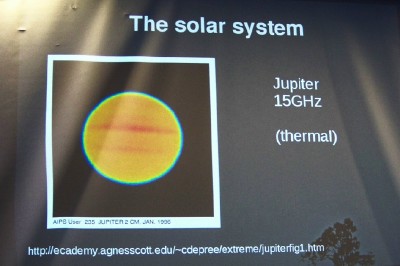
Jupiter also has thermal emissions at 15GHz.
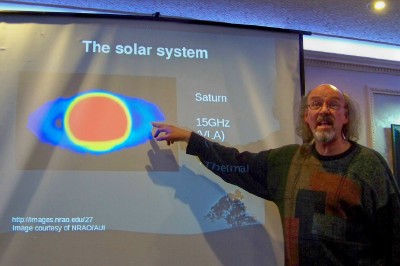
Saturn also provides thermal emissions at 15GHz.
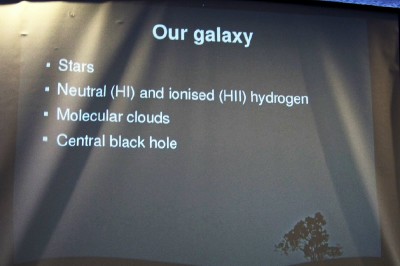
Radio emitters in our Galaxy include stars, neutral hydrogen (HI) and ionized hydrogen (HII), molecular clouds and the infamous central Black Hole.
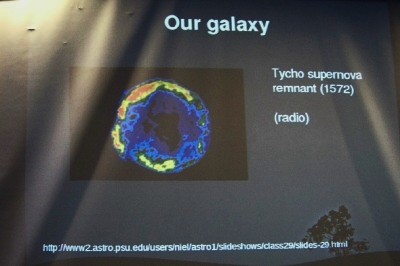
Most stars are too faint to “see” in the radio spectrum, but there are a few “bright stars” where something special is happening, e.g. strong gas outflows. End-of-life stars such as Supernova remnants e.g. Tycho show how the star looks now, long after its explosion in 1572.
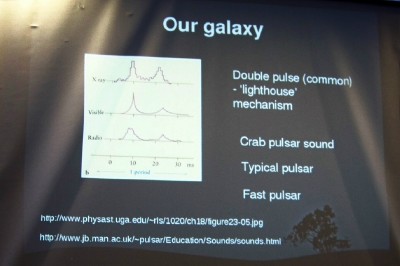
Pulsars provide some strong sources, of which John played some remarkable audio recordings.
Click on Jodrell Bank Website to hear them.
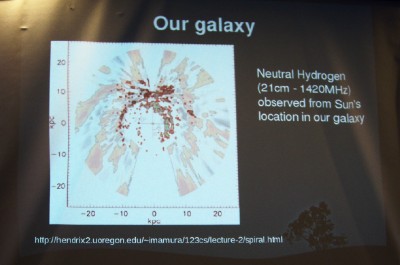
Neutral Hydrogen (HI) enables the galaxy structure such as the spiral arms to be mapped.
(21cm / 1420MHz).
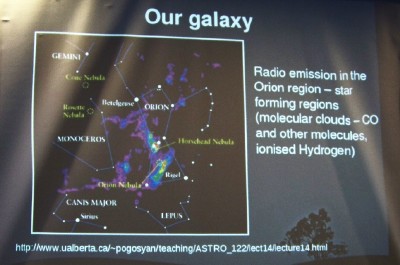
Ionized Hydrogen (HII) provides higher temperatures especially in star-forming regions,
e.g. the Orion region (230GHz).
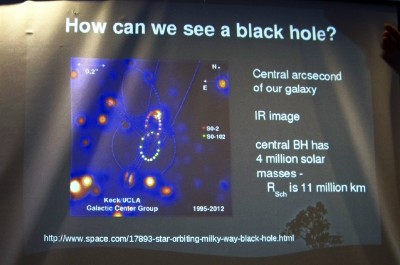
How can we see a Black Hole? Well, the answer is “not directly” – there is no visible light as it is traveling at less than the escape velocity from the gravity of 4 million solar masses in the Black Hole.
However, we can see star systems which are orbiting around the Black Hole.
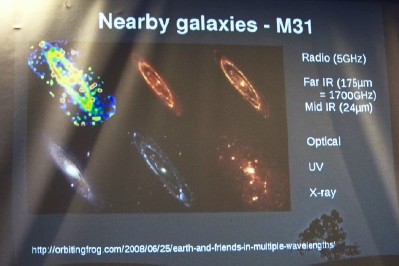
Moving out from our own galaxy, John then discussed radio emissions from other galaxies such as M31, observed here at a range of frequencies from 5GHz radio all the way up to X-rays.
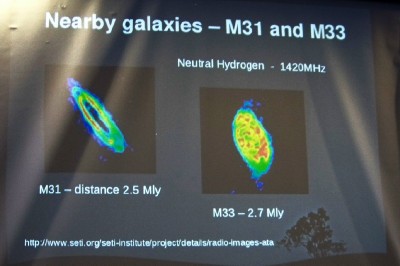
M31 is located at 2.5 Mly (Million light years) from earth and M32 at 2.7 Mly,
here observed using Neutral Hydrogen emissions at 1420MHz.
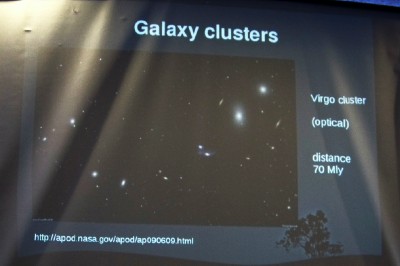
Even further out, Galaxy clusters include Virgo at 70Mly, Active Galaxies & Quasars.
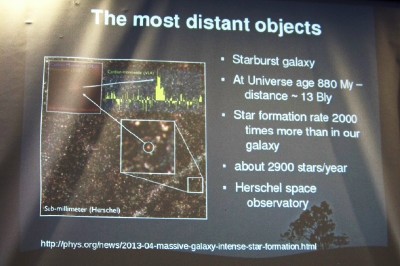
The most distant observable objects include the Starburst Galaxy at 13 Bly. Think about it – 13 Billion Light Years away! The Hubble space telescope has been responsible for our ability to see such objects.
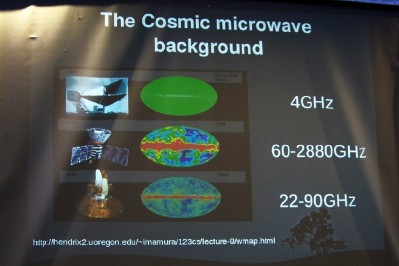
John concluded by showing charts of the Cosmic Microwave Background. Our galaxy is the signal in the galactic plane right across these three projections of the whole sky – at 4GHz which is relatively uniform; at 60 – 2880GHz; and at 22 – 90GHz with higher resolution. Black body radiation at 2.73K (-270.4C) is a remnant of the Big Bang.
Thanks again to John for a really great talk!
